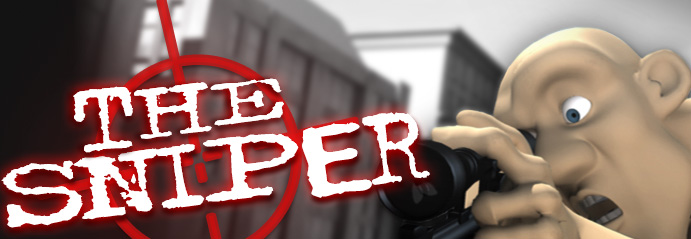
|
|
|
|
|
|

|
|
|
|

|
|
|
|
|
|
|
|
Animation Mentor: How did you come up with the concept for your short film?
Billy Tang: After each game, we would have a little team meeting to follow up on the last game. At that time, I was always thinking of a way to outsmart the snipers from the opposing team. This is where I got the idea for the short film. Animation Mentor: What important lessons did you learn from making your short film?
Billy Tang: When I was making the storyboard, I was surprised by how much mood was added to the story by different layouts and camera angles, and how much the story is easier on the eyes. Animation Mentor: What was the best piece of advice you received from your mentor or your peers?
Billy Tang:
Animation Mentor: What were the steps you took in your planning process?
Billy Tang: Animation Mentor: Do you mind sharing some of the pre-production work with us with a little explanation of what we're looking at? Billy Tang: Pitching Pitching is hard for me. As you can see my English is not that good. Sometimes I didn't even understand what I was talking about. So I tried to use the most simple way to tell a story so the audience could understand me easily. The final story is quite different from pitching because I continued to refine the story. Lots of things were thrown away to make the story as simple as possible, but also to make sense. Thumbnails and Animatic From the drawing, you can tell that I really can't draw well. I just try to put as much information as possible in the thumbnails. And the animatic would give myself a rough idea of how the timing and the staging goes. Layout It is just like the animatic but in the Maya environment with all the models and camera angle set in place. I think it really helps because once I do the layout, I can see the potential problem that could happen and fixing it at this point would save me lot of time then fixing it in blocking stage. Rough Pass I did a few rough passes. For each pass I would put as much information as possible so that I wouldn't miss anything important. Final Render Here it is, my first animated short film. Animation Mentor: What obstacles, if any, did you experience during the creation of your short film? How did you work your way around them?
Billy Tang: Animation Mentor: How did Animation Mentor help you create your short film?
Billy Tang: |
|
Copyright © AnimationMentor.com ® All Rights Reserved





